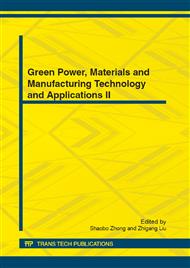p.183
p.188
p.194
p.200
p.208
p.213
p.219
p.223
p.227
Realization of the Viterbi Algorithm in MLSE with Intersymbol Interference
Abstract:
Optimum receiver model for channels with Intersymbol Interference (ISI) and Additive White Gaussian Noise (AWGN) are introduced to deduce the Viterbi algorithm in the Maximum-Likelihood Sequence Estimation (MLSE). Finally, we use Matlab to simulate the algorithm in three different channels and analyze the experiment results. Analyses show that the Viterbi algorithm is applicable for any channel which is optimum from a probability of error viewpoint; the MLSE for channels with ISI has a computational complexity that grows exponentially with the length of channels time dispersion L; the loss of performance is negligible when the decoding delay achieves 5L.
Info:
Periodical:
Pages:
208-212
Citation:
Online since:
November 2012
Authors:
Price:
Сopyright:
© 2012 Trans Tech Publications Ltd. All Rights Reserved
Share:
Citation:


